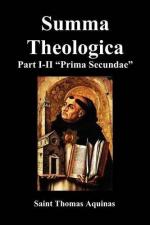Reply Obj. 4: Since Christ said at the very outset of the preaching of the Gospel: “The kingdom of heaven is at hand” (Matt. 4:17), it is most absurd to say that the Gospel of Christ is not the Gospel of the kingdom. But the preaching of the Gospel of Christ may be understood in two ways. First, as denoting the spreading abroad of the knowledge of Christ: and thus the Gospel was preached throughout the world even at the time of the apostles, as Chrysostom states (Hom. lxxv in Matth.). And in this sense the words that follow—“and then shall the consummation come,” refer to the destruction of Jerusalem, of which He was speaking literally. Secondly, the preaching of the Gospel may be understood as extending throughout the world and producing its full effect, so that, to wit, the Church would be founded in every nation. And in these sense, as Augustine writes to Hesychius (Epist. cxcix), the Gospel is not preached to the whole world yet, but, when it is, the consummation of the world will come. ________________________
QUESTION 107
OF THE NEW LAW AS COMPARED WITH THE OLD
(In Four Articles)
We must now consider the New Law as compared with the Old: under which head there are four points of inquiry:
(1) Whether the New Law is distinct from the Old Law?
(2) Whether the New Law fulfils the Old?
(3) Whether the New Law is contained in the Old?
(4) Which is the more burdensome, the New or the Old Law? ________________________
FIRST ARTICLE [I-II, Q. 107, Art. 1]
Whether the New Law Is Distinct from the Old Law?
Objection 1: It would seem that the New Law is not distinct from the Old. Because both these laws were given to those who believe in God: since “without faith it is impossible to please God,” according to Heb. 11:6. But the faith of olden times and of nowadays is the same, as the gloss says on Matt. 21:9. Therefore the law is the same also.
Obj. 2: Further, Augustine says (Contra Adamant. Manich. discip. xvii) that “there is little difference between the Law and Gospel” [The ‘little difference’ refers to the Latin words ‘timor’ and ’amor’]—“fear and love.” But the New and Old Laws cannot be differentiated in respect of these two things: since even the Old Law comprised precepts of charity: “Thou shalt love thy neighbor” (Lev. 19:18), and: “Thou shalt love the Lord thy God” (Deut. 6:5). In like manner neither can they differ according to the other difference which Augustine assigns (Contra Faust. iv, 2), viz. that “the Old Testament contained temporal promises, whereas the New Testament contains spiritual and eternal promises”: since even the New Testament contains temporal promises, according to Mk. 10:30: He shall receive “a hundred times as much . . . in this time, houses and brethren,” etc.: while in the Old Testament they hoped in promises spiritual and eternal, according to Heb. 11:16: “But now they desire a better, that is to say, a heavenly country,” which is said of the patriarchs. Therefore it seems that the New Law is not distinct from the Old.




